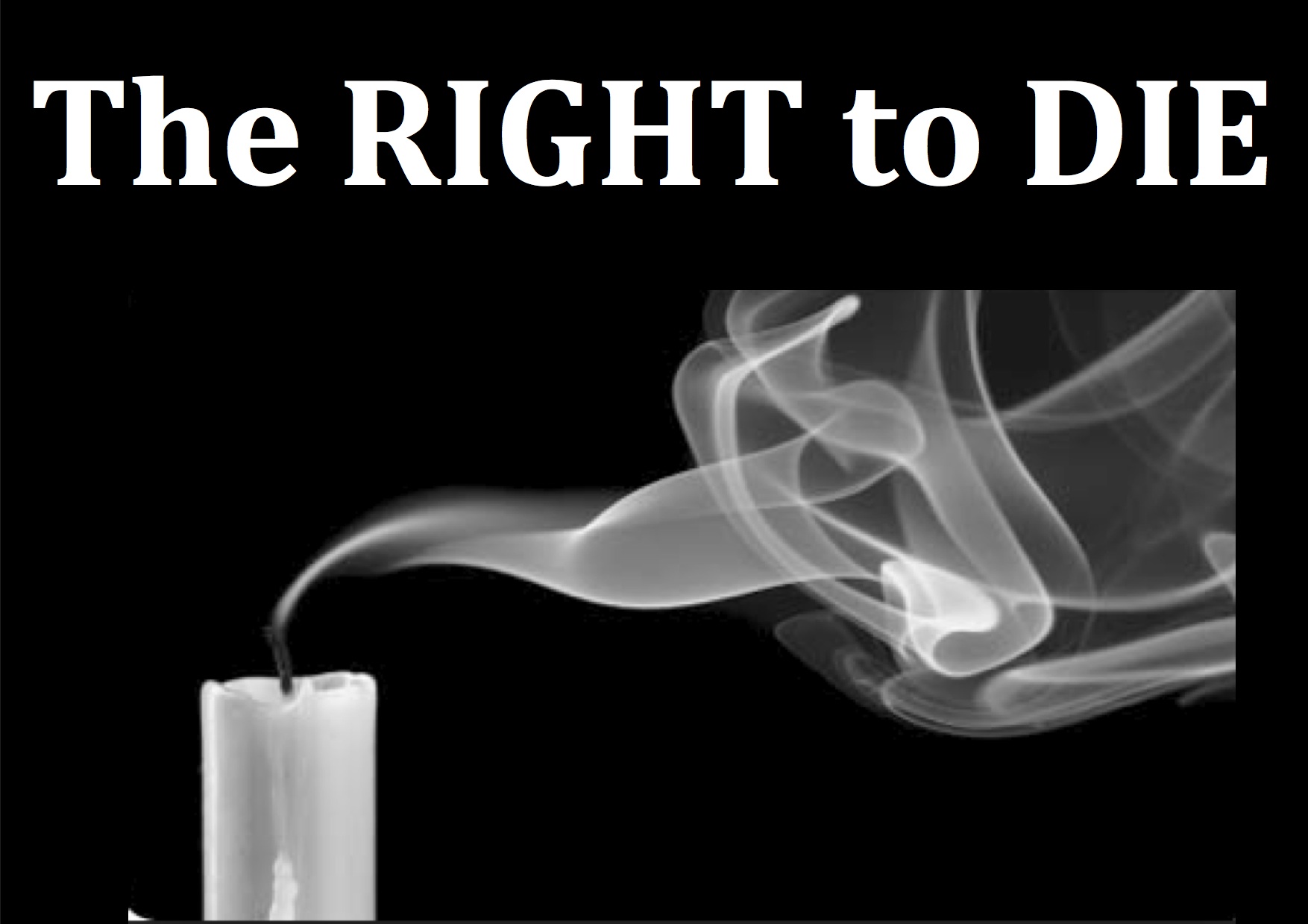This article is written by Shruti Mishra, currently pursuing B.A. LL.B (Hons.) from IIMT & School of Law (Guru Gobind Singh Indraprastha University, Delhi). It is an article which talks about various legal aspects of physician-assisted suicide.
Table of Contents
Introduction
Euthanasia or Physician-Assisted Suicide (PAS) is practised when an individual wants to exercise his Right to Die with dignity. These practices have been legalised in several nations, mostly in developed countries, e.g. in few states of the United States, Netherland, Switzerland, Canada etc. The legalisation of euthanasia has led to people moving to these states where euthanasia or assisted dying is legal, to free themselves from the terminal illnesses.
In simple words, an individual is allowed to end his or her life at their request with the help of physician-prescribed medication. To legalise euthanasia or assisted suicide, it would mean that the people who are assisting such voluntary death shall be exempted from any criminal manslaughter charges. Physician-assisted suicide is a debatable topic, on one hand, it is an easier way to end a person’s agony and his never ending suffering, by assisting his death and on the other hand, assisting them to take their own life is opposed in the medical field as it goes against their ethics. In addition to that, there are chances that such right or law might get misused. In many countries, only passive euthanasia is legal and active euthanasia is still under review, one of those nations is India. In this article, various aspects related to euthanasia is discussed with the latest legal developments, India’s standpoint on the subject and a global point of view including the landmark cases which made the society more aware of euthanasia and assisted dying.
What is assisted suicide
Assisted suicide is a physician-assisted dying when a physician prescribes a terminal or lethal dosage of the medication for the individual so they could assist themselves in dying.
It is legalised in 4 states of the United States which includes Oregon, Washington, Vermont, Montana and California. The state of Oregon and Washington have passed the Death with Dignity Act, 2002, which allowed terminally ill patients who are expected to expire within six months for physician-assisted suicide. The significant number of people who have died through assisted suicide were the patients of terminal illnesses like advanced cancer, advanced heart disease, motor nerve disease etc. Assisted dying is practised with the primary intention of relieving the patients from the continuous and the unstoppable suffering of the disease, which also includes endless treatment process, which is painful.
History of euthanasia
Assisted dying or euthanasia has been a topic of debate since the 1800s. In 1938 a society for euthanasia was established to legalise assisted dying. In 1937 Switzerland legalised Physician-Assisted Suicide later in 1960s movement for Right to Die, and living wills came into existence. Around 2002, physician-assisted suicide was decriminalised in Netherland and Belgium.
After the recognition, now there are ethics committees in hospitals. The concept of living wills was legalised in California in 1977, where the person willfully states whether they want medical care when they’re not in the position to make a choice. In 1999 passive euthanasia was accepted in the United States by the Supreme Court, in 1994 state of Oregon, in 2008 Washington state also voted in favour of the Death with Dignity Act which later became law in 2009.
Should Assisted Suicide be legal
Arguments in favour of assisted suicide-
- Physician-assisted suicide or active euthanasia is an act of kindness to relive terminally ill patients from their endless sufferings.
- The quality of life of terminally ill patients matters; so, every individual should live with dignity, it justifies and makes it ethical to relive the patients from their pain.
- Passive euthanasia through withdrawing life support is also like taking an active step to fasten the death of the patient. Similarly, the physician-assisted suicide is similar; the physician makes a proactive step of administering a terminal dose with the patient’s consent.
- This way, the patient who is suffering the whole process of slow death can control his manner of death and have some psychological insurance for himself.
Arguments opposing assisted suicide-
- The doctors take a Hippocratic oath, i.e. to not harm the patient, which makes physician-assisted suicide against their medical ethics.
- The religious point of view is that God created human life, and taking a life is morally wrong.
- A lot of patients who request for physician-assisted suicide sometimes go through mental disorders, or they don’t get adequate palliative care, in such cases if the patient went undiagnosed or untreated or such issues, it will be a wrong step to take.
- Physician-assisted suicide can also be bad for the vulnerable section of the society; those who belong to the socio-economic class might get coerced into making such requests just to solve their financial problems arising from their treatment.
- It can be highly misused in many ways, the legal and the medical societies might end up on a “slippery slope” if assisted dying is legalised, it’s practice will eventually expand to carious patients.
Suicide and passive euthanasia
To under understand assisted suicide a bit better, one needs to understand the fundamental difference in the different terminologies which are used.
Euthanasia
The physicians provide a lethal dose of medication to assist the patients in terminating their life, to end their suffering. The difference between euthanasia and assisted suicide is that in assisted suicide, the patients assist themselves, which means a physician does not assist them. The physician’s role is only to provide the terminal dose of medication.
Passive euthanasia
When the patient’s treatment is withdrawn, it is considered to be voluntary because the patient consented to no further treatment by signing a DNR (Do not resuscitate). It is regarded as involuntary when the family or relative of the patient requests the physician to stop any further treatment, allowing them to die naturally. This generally happens when the patient is in a coma or a similar situation.
Indian Perspective
In India, euthanasia is a very controversial topic. When we talk about Physician-Assisted Suicide(PAS), it means giving an individual a choice to die painlessly. The involuntary euthanasia, i.e. “Mercy Killing” is practised to stop the pain and suffering of the patient when he/she is unable to give his/her consent.
The legal status of physician-assisted suicide and passive euthanasia comes under Indian Penal Code where physician-assisted suicide or active euthanasia is illegal. It is considered an offence under Section 302 or Section 304, which talks about punishment for murder or culpable homicide not amounting to murder. The apex court legalised mercy killing in 2018 for terminally ill patients with a specific guideline, the direction for the legalisation of passive-euthanasia in India derived from foreign decisions/precedents and International conventions. In Indian Constitution, Right to life is stated under Article 21, but the Right to Die is not given the state is supposed to avail healthcare for the citizens. The patient’s right to live with dignity includes their right to determine their life but the society’s principles, as well as medical ethics, have had conflicts against such kinds of killings.
Case laws
Gian Kaur v. State of Punjab (1996) SC 946
In this case, the apex court stated that the Right to life which is given under Article 21, leaves out an individual’s Right to Die, such negative right is not allowed as it will defeat the positive meaning of Article 21 of the Constitution. The constitutionality of Section 309 (attempt to commit suicide) under IPC was upheld. The court referred to an English case, i.e. Airdale Case (1993 All ER 82), this case pointed out the significant differences between Physical Assisted Suicide and Passive euthanasia(withdrawal of life-support of the patient). The English common law has opposed the idea of euthanasia and considered it a criminal act, where a doctor gives out the medicine for ending a patient’s life. The court made it clear that euthanasia and physician-assisted suicide is illegal in India, and such acts are punishable under criminal law. However, the Supreme Court agreed with their concept but also introduced an exclusive right for patients who are terminally ill, i.e. right to die with dignity, so the patients in PVS or brain-dead choose death over a miserable life.
After this case, recommendations were made under 210th report of the Law Commission, on humanitarian grounds to decriminalise the attempt to suicide, Section 309 under IPC.
Aruna Ramchandra Shanbaug v. Union of India & Ors. (2011)
Before this case, Article 21 of the constitution of India allowed its citizens to exercise their Right to Life and liberty, whereas, the Right to Die was the point of the debate in Judicial matters. It was recognised under Section 309 and Section 306 of the Indian Penal Code. In this case, the petitioner was a nurse at King Edward Memorial Hospital in Mumbai. A man assaulted her, he tried to immobilise her with a belt, and he ended up hurting her neck, which stopped the oxygen supply, and she ended up having damages in her brain functions. For 36 years she has been suffering in a PVS, i.e. permanent or persistent vegetative state which means a person who is virtually dead. The plea for mercy killing was rejected, but the concept of “living will” was recognised by the court. The Supreme Court issued some guidelines for Passive euthanasia, legalised it and said that it would apply to rarest of the rare cases only. The court added that the right to die does come under the scope of the Fundamental Rights and with this judgement, the court also specified that the request for Passive euthanasia should be approved by the High Court, to make sure that there is no wrong motive of relatives or friends. This judgement paved a constructed way for the application of Passive euthanasia by allowing the citizen to have their ‘living will’.
Recent legal development
When we talk about the legal status of euthanasia and physician-assisted suicide, it’s not guaranteed at all it can vary, the public’s mindset is a significant factor in deciding whether ending a life should be legalise or not. There have been surveys showing that there is a divide in point of view of the public on euthanasia, these confused views are because of the complicated relationship between the legal system and society’s interpretation of what’s legal and ethical.
There have been various legal Developments in the United States in which physician-assisted dying has been legalised:
- On April 5th 2018, the state of Hawaii signed “Our care, our choice Act”.
- In California, the Superior court Judgement of Mr Ottolia overturned the state’s 2016 law which legalised physician-assisted dying, allowing doctors to prescribe lethal medicines to terminally ill patients, the law was held unconstitutional. In June 2018, the ruling of the appellate court ruled against the Superior court of California and legalised physician-assisted suicide. Later in February 2019, the California Supreme Court sustained the stay order of the Appellate court and allowed Physician-Assisted Suicide for terminally ill patients who meet the criteria.
- In April 2019, the state government of New Jersey enacted the “Aid in dying for terminally ill Act”, which allowed the adults with the prognosis of six months or less to live for assisted death, i.e. they can get medication for ending their lives with a psychiatrist or psychologist’s approval of his/her mental state.
- In June 2019, the government of the state of Maine signed “Death with Dignity Act”, which states that it is valid for adults with mental competence within reasonable medical decision and prognosis of 6 months or less to live, they can request for physician-assisted suicide.
Important case laws
Vacco v. Quill (1997) 521 US 793
The New York state banned physician-assisted suicide; the case was filed to challenge the constitutionality of such ban, Mr T. Quill filed it along with two physicians and few severely ill patients. It was argued that the prohibition is violating the 14th amendment, which provides equal protection. The law allowed passive euthanasia to be legal, whereas physician-assisted suicide was considered illegal. The ruling of the district court was against such a challenge. Still, when the case went to the second circuit, the judgement was reversed and was in favour of Mr T. Quill, and later the Supreme Court held that the state’s ban on Physician-Assisted Ban is not unconstitutional.
Gonzales v. Oregon (1994)
In this case, the state of Oregon in the United States passed the Death with Dignity Act; the act dealt with laws which permitted Physical Assisted Suicide with a lethal dose of medicine for terminally ill patients. Later, the act was opposed by the Attorney general of the United States. Mr J. Ashcroft stated that the Death with Dignity Act violated the Controlled Substances Act, 1970 and further threatened that if any Physician practices physician-assisted suicide, his/her medical license would be cancelled. The State of Oregon challenged this in the federal district court, the court and the circuit held that his declaration was illegal. The case went to the Supreme Court, it was held that the use of the controlled substance for Physician-Assisted Suicide does not violate the Controlled Substances Act and in addition to that, the act did not allow the Attorney General to ban the use of such substances for physician-assisted suicide.
Common Cause (A Regd. Society) v. Union of India (2018)
This was a landmark judgement, a writ petition was filed requesting a strong system for Passive euthanasia and recognition of the ‘living will’ of a person. In this case, the constitutionality of section 306 of the Indian Penal Code was challenged. The Supreme Court recognised the concept of living will in India. The court also recognised the ‘Right to Die with Dignity’, Right to Self-determination and Right to Autonomy as fundamental rights.
Conclusion
Physician-assisted suicide has been and always will be controversial, some arguments will support it, and some would oppose the idea of euthanasia and physician-assisted suicide. The major clash of opinion is between medical ethics and the society about the legalisation of physician-assisted dying as it would force the medical practitioners to change along with the law regardless of their personal opinion.
There are numerous concerns and various aspects that matter once physician-assisted suicide is allowed to be practised. It will be challenging to estimate the accuracy of the prognosis, the issues of whether the decision taken by the patient is because of depression or if it’s a natural reaction. Not just that but the medical, ethical and religious aspects are to be considered before legalising it, especially in a country like India.
There are practical concerns in India about the regulation of such laws, e.g. lack of availability of a psychiatrist or a psychologist, the number of Physician-Assisted Dying might go unreported, the patient cannot have a second consultation etc. There is a need for proper research on all the attributes of all the concerns regarding physician-assisted dying in India. Then it can be decided whether physician-assisted suicide should be legalised or not.
References
- https://www.ncbi.nlm.nih.gov/pmc/articles/PMC3070710/#:~:text=To%20date%2C%20the%20Netherlands%2C%20Belgium,but%20euthanasia%20remains%20illegal%203.
- https://www.deathwithdignity.org/oregon-death-with-dignity-act-history/
- https://www.ncbi.nlm.nih.gov/pmc/articles/PMC1802109/
- https://www.ncbi.nlm.nih.gov/pmc/articles/PMC3070710/
- https://www.ncbi.nlm.nih.gov/pmc/articles/PMC2585714/
- https://ncd.gov/sites/default/files/NCD_Assisted_Suicide_Report_508.pdf
- https://ohrh.law.ox.ac.uk/right-to-die-with-dignity-a-fundamental-right-indian-supreme-court-allows-passive-euthanasia-and-living-wills/
LawSikho has created a telegram group for exchanging legal knowledge, referrals and various opportunities. You can click on this link and join:
 Serato DJ Crack 2025Serato DJ PRO Crack
Serato DJ Crack 2025Serato DJ PRO Crack











 Allow notifications
Allow notifications



